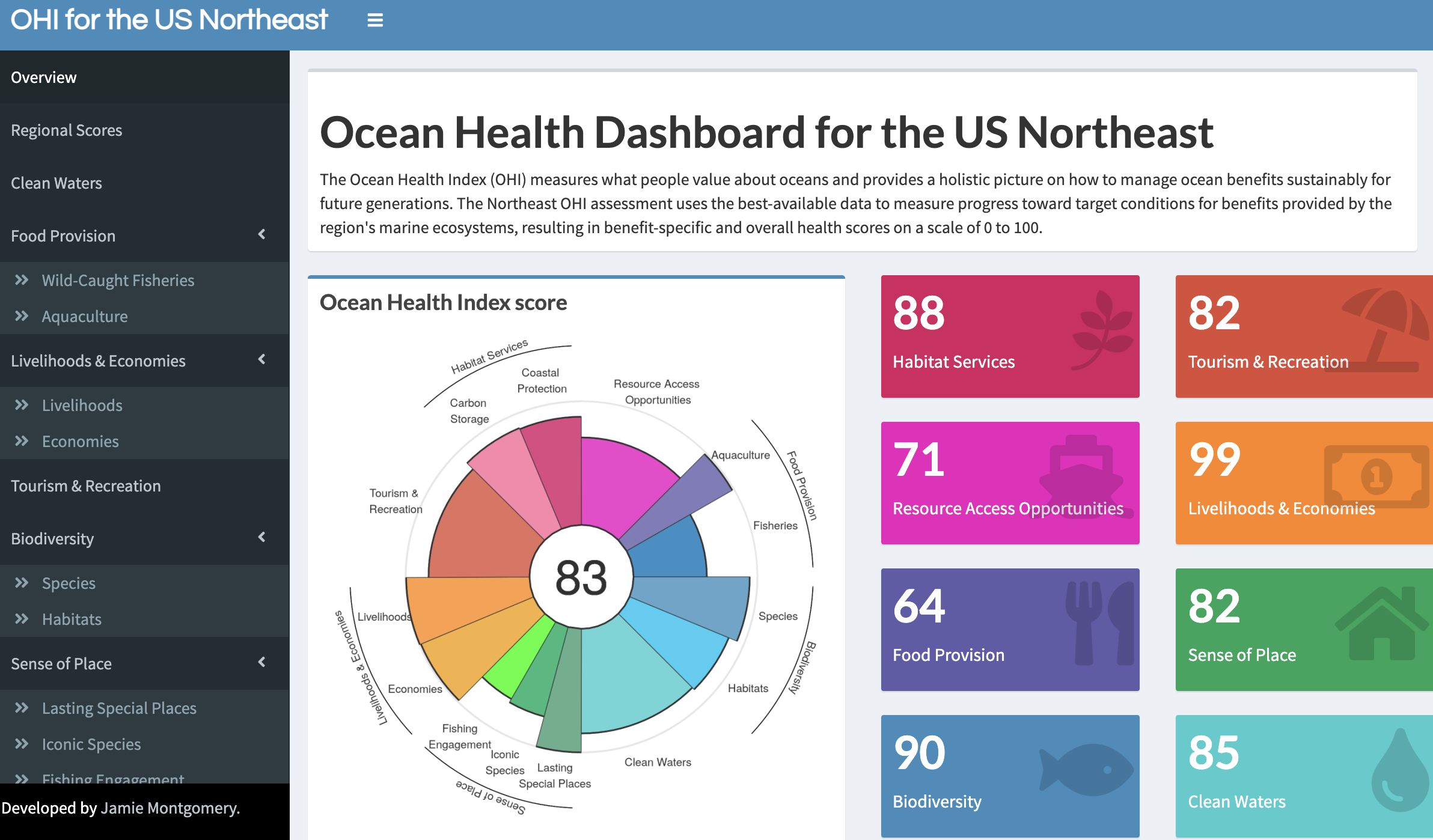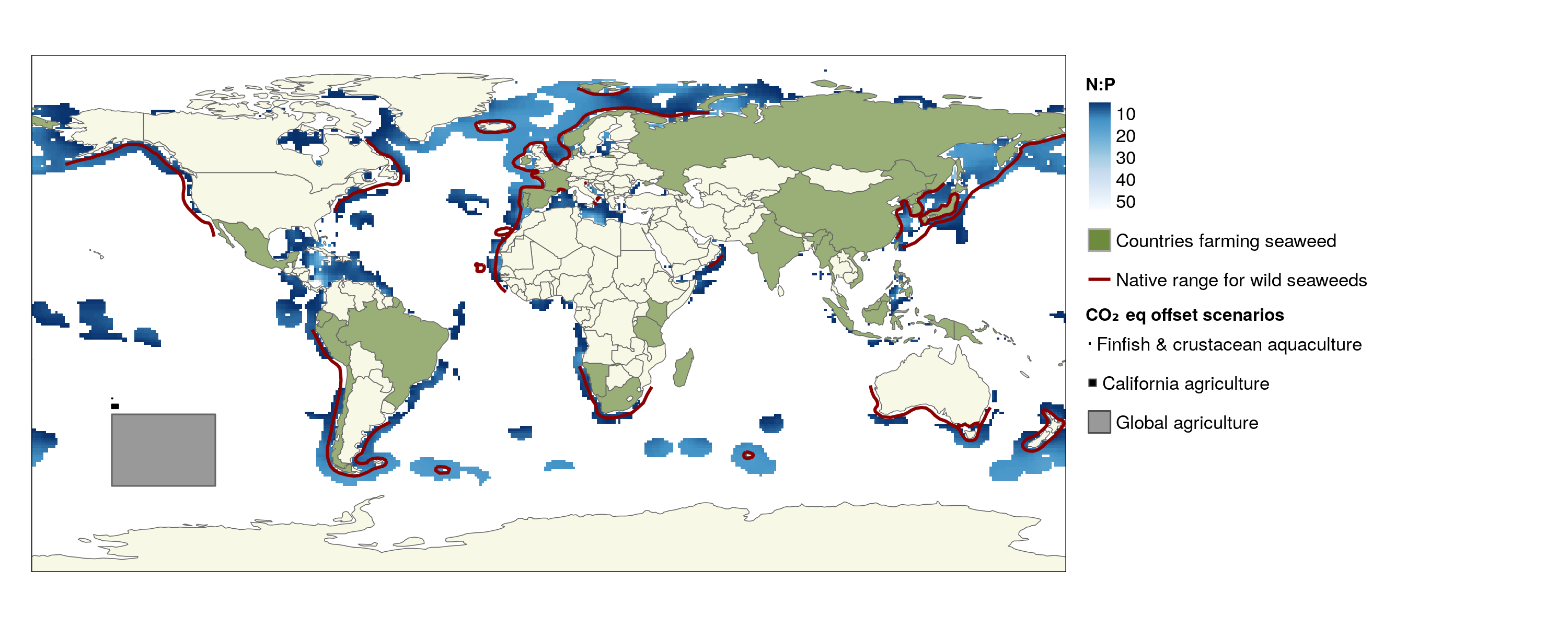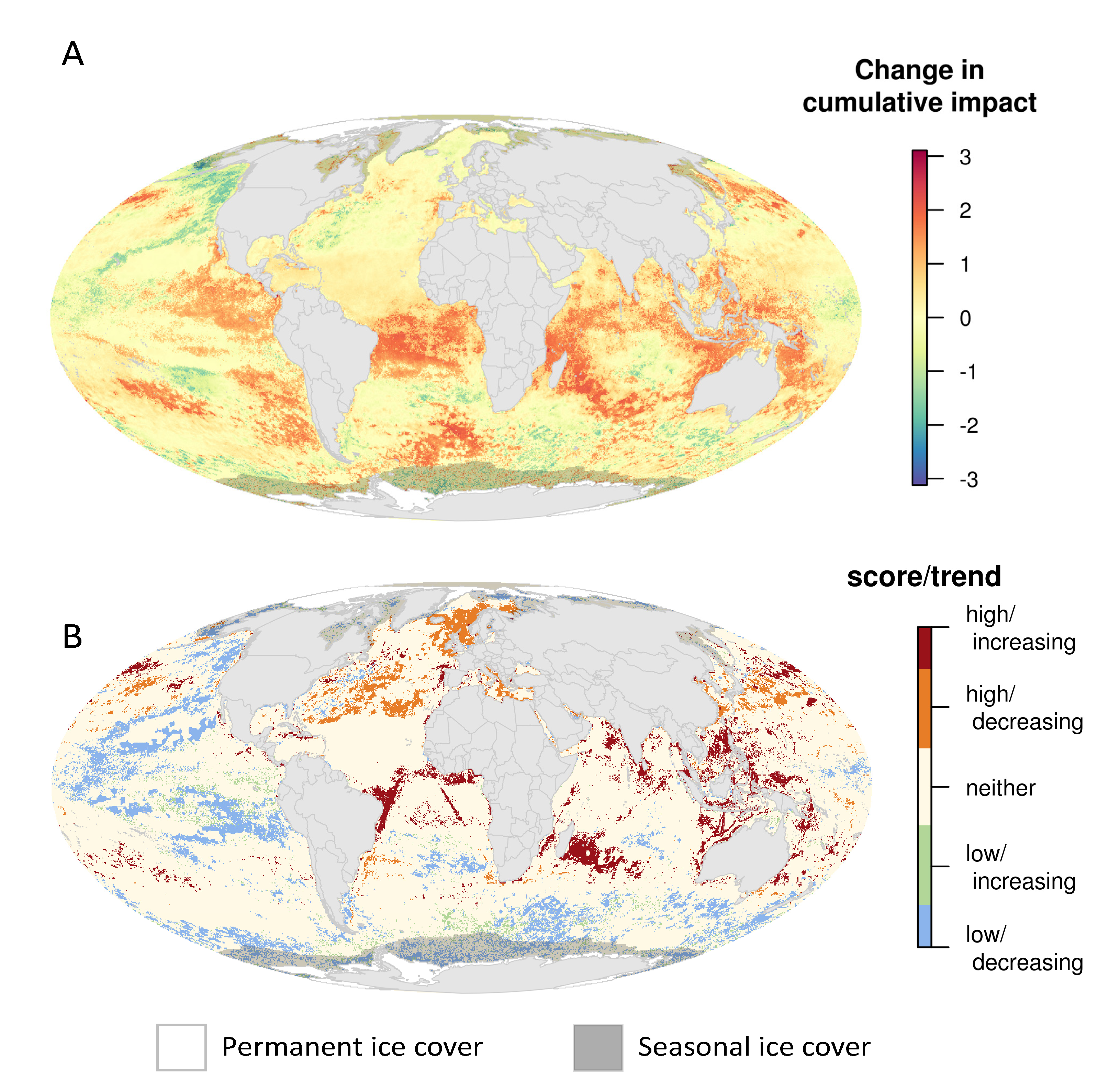
People in the Northeast United States have a long history of benefitting from the ocean in many ways, exemplified by the region’s important cod and lobster fisheries, coastal tourism and recent expansion of offshore energy. Over the past few decades, the region has become one of the fastest warming spots on the planet, has seen significant growth in coastal populations, and expansion of new sectors into the marine environment, resulting in ecosystem shifts and changes to the supply and distribution of these benefits. With these changes comes a need for measuring ocean health to understand how engagement with the ocean may be affected, and how regional management may need to adapt. To address this need, we tailored the Ocean Health Index framework to the U.S. Northeast region, scoring eight distinct goals for ocean health on a scale of 0 to 100 for 11 sub-regions over 13 years (2005–2017). All goal scores were averaged resulting in an Ocean Health Index score of 83 for the Northeast in 2017. This score fluctuated by 1 point in either direction (82–84) in the previous 12 years. The lowest scoring goals in 2017 also exhibited the highest volatility since 2005, Food Provision (64) and Resource Access Opportunities (71). The region’s highest goal scores came from Livelihoods & Economies (99) and Biodiversity (90) and remained stable during the study period. Clean Waters scores had a steady, significant downward trend since 2005, while Resource Access Opportunities and Aquaculture show the largest improvements. This synthesis of over 50 datasets to create annual aggregate scores provides the public, government and non-government agencies with an easily digestible summary of how the region is faring in regards to ocean health. Perhaps even more importantly, this synthesis allows for the tracking of trends over time and the ability to quickly identify and prioritize low-scoring components of ocean health that could benefit from dedicated resources for improvement. As managers plan for the future in a changing Northeast marine region, the ability to track annual changes in ocean health and its respective components is key to making decisions that benefit the entire social-ecological system.
J Montgomery, C Scarborough, E Shumchenia, J Verstaen, N Napoli, BS Halpern
In People and Nature,2021

Carbon offsetting—receiving credit for reducing, avoiding, or sequestering carbon—has become part of the portfolio of solutions to mitigate carbon emissions, and thus climate change, through policy and voluntary markets, primarily by land-based re- or afforestation and preservation. However, land is limiting, creating interest in a rapidly growing aquatic farming sector of seaweed aquaculture. Synthesizing data from scientific literature, we assess the extent and cost of scaling seaweed aquaculture to provide sufficient CO2eq sequestration for several climate change mitigation scenarios, with a focus on the food sector—a major source of greenhouse gases. Given known ecological constraints (nutrients and temperature), we found a substantial suitable area (ca. 48 million km2) for seaweed farming, which is largely unfarmed. Within its own industry, seaweed could create a carbon-neutral aquaculture sector with just 14% (mean = 25%) of current seaweed production (0.001% of suitable area). At a much larger scale, we find seaweed culturing extremely unlikely to offset global agriculture, in part due to production growth and cost constraints. Yet offsetting agriculture appears more feasible at a regional level, especially areas with strong climate policy, such as California (0.065% of suitable area). Importantly, seaweed farming can provide other benefits to coastlines affected by eutrophic, hypoxic, and/or acidic conditions, creating opportunities for seaweed farming to act as “charismatic carbon” that serves multiple purposes. Seaweed offsetting is not the sole solution to climate change, but it provides an invaluable new tool for a more sustainable future.
HE Froehlich, JC Afflerbach, M Frazier, BS Halpern
In Current Biology,2019

Humans interact with the oceans in diverse and profound ways. The scope, magnitude, footprint and ultimate cumulative impacts of human activities can threaten ocean ecosystems and have changed over time, resulting in new challenges and threats to marine ecosystems. A fundamental gap in understanding how humanity is affecting the oceans is our limited knowledge about the pace of change in cumulative impact on ocean ecosystems from expanding human activities – and the patterns, locations and drivers of most significant change. To help address this, we combined high resolution, annual data on the intensity of 14 human stressors and their impact on 21 marine ecosystems over 11 years (2003–2013) to assess pace of change in cumulative impacts on global oceans, where and how much that pace differs across the ocean, and which stressors and their impacts contribute most to those changes. We found that most of the ocean (59%) is experiencing significantly increasing cumulative impact, in particular due to climate change but also from fishing, land-based pollution and shipping. Nearly all countries saw increases in cumulative impacts in their coastal waters, as did all ecosystems, with coral reefs, seagrasses and mangroves at most risk. Mitigation of stressors most contributing to increases in overall cumulative impacts is urgently needed to sustain healthy oceans.
BS Halpern, M Frazier, JC Afflerbach, JSS Lowndes, F Micheli, CC OHara, C Scarborough, K Selkoe
In Scientific Reports,
2019
Reproducibility has long been a tenet of science but has been challenging to achieve—we learned this the hard way when our old approaches proved inadequate to efficiently reproduce our own work. Here we describe how several free software tools have fundamentally upgraded our approach to collaborative research, making our entire workflow more transparent and streamlined. By describing specific tools and how we incrementally began using them for the Ocean Health Index project, we hope to encourage others in the scientific community to do the same—so we can all produce better science in less time.
JS Lowndes, BD Best, C Scarborough, JC Afflerbach, MR Frazier, CC OHara, N Jiang, BS Halpern
In Nature Ecology & Evolution,
2017


